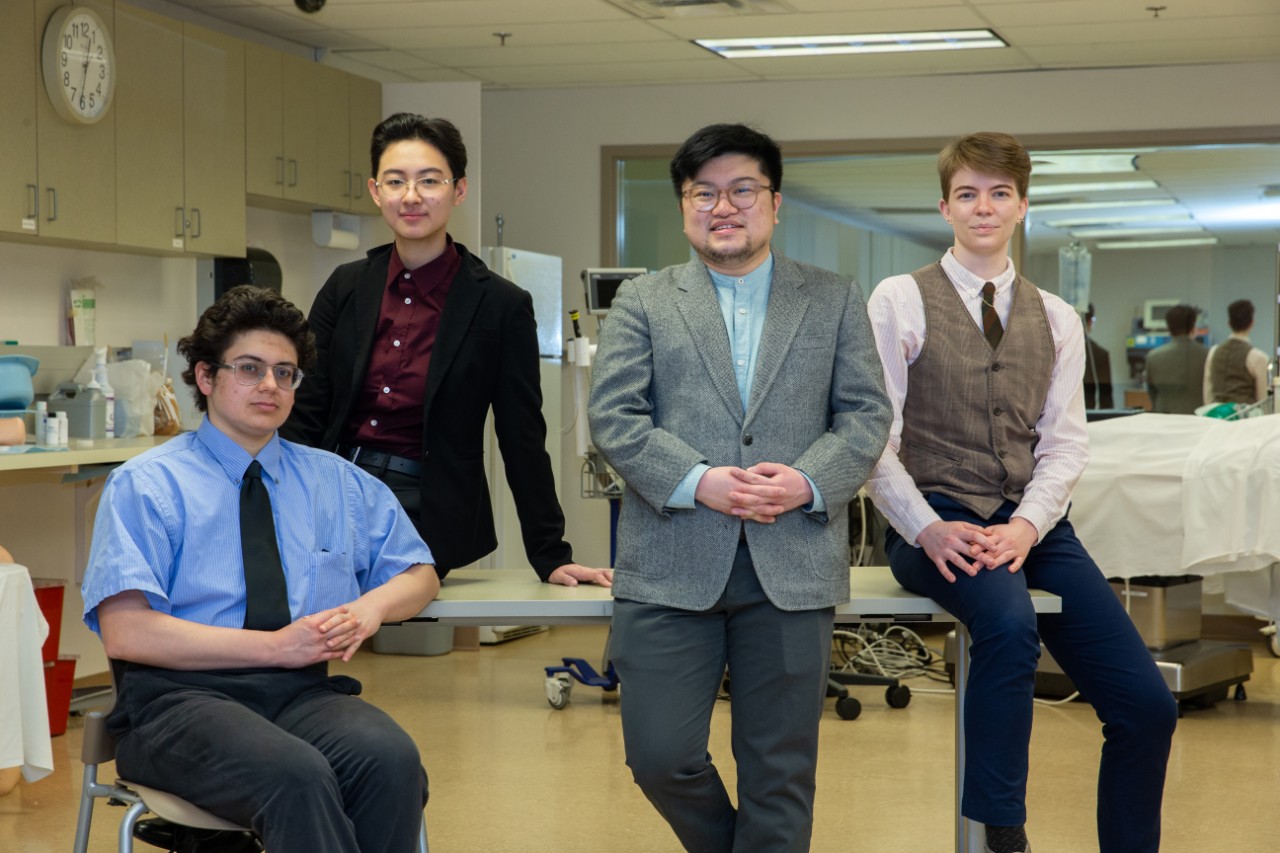
Students, faculty and staff embrace transgender medicine curriculum in the College of Medicine
UC has one of the most comprehensive transgender programs in the nation
According to the Association of American Medical Colleges 2021 medical school graduation questionnaire, 0.7% of more than 15,000 medical students responding identified as a different gender identity from the sex assigned at birth. That number is up from 0.3% in the same questionnaire in 2013.
That trend exemplifies the impact and importance of the transgender medicine program, established in 2016 by Sarah Pickle, MD, from the University of Cincinnati’s Department of Family and Community Medicine and Aaron Marshall, PhD, from the Department of Medical Education, at the University of Cincinnati College of Medicine.
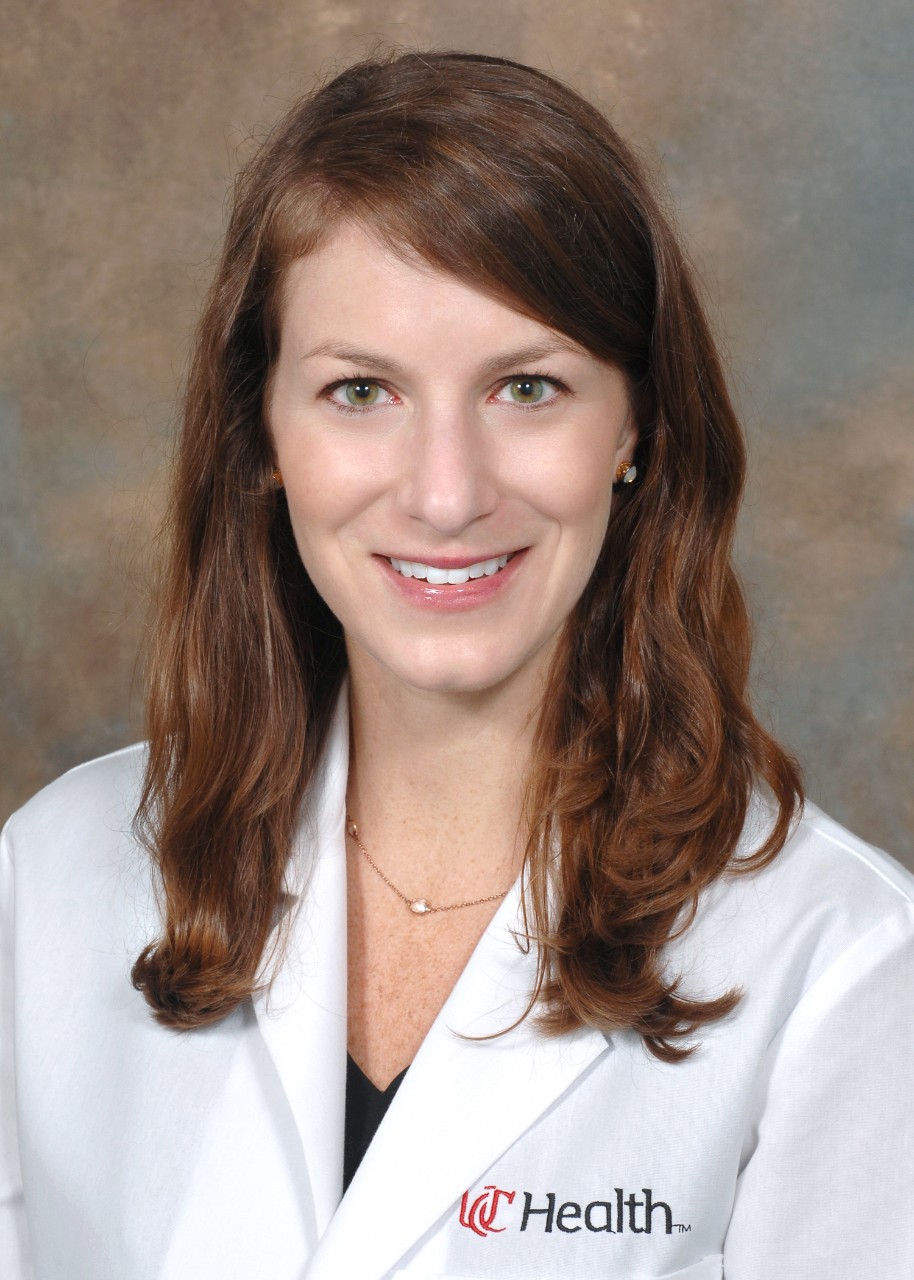
Sarah Pickle, MD, of the Department of Family and Community Medicine in the UC College of Medicine/Photo/Colleen Kelley/UC Creative + Brand
“When we were putting the transgender medicine curriculum together, it really wasn't being taught on a larger landscape. We integrated it into the basic science curriculum so that in the students’ first and second year, when they were already learning about hormonal pathways and sexual development, they were also learning about gender diversity,” says Pickle.
“Instead of placing transgender health separate in a more ethics or social content course, we integrated it into the foundational science part of the curriculum,” she adds. “The idea was that we could then give students the tools, like understanding the physiology of gender affirming hormones, and also prepare them for inclusive conversations with our patients as partners in their gender journeys.”
Very little exists in the way of research about transgender medical students in the United States. Stanford University conducted a study published in 2015 titled “Sexual and Gender Minority Identity Disclosure During Undergraduate Medical Education: In the Closet in Medical School.” More than 175 medical schools in the U.S. and Canada were surveyed about their students’ sexual identity, if they were “out,” and if not, why they chose to mask their identity. Of the 5,812 completed surveys, 920 students across 152 institutions identified as a sexual or gender minority. Of those, 912 identified as sexual minority, and 29.5% concealed their sexual identity in medical school. In addition, 43.5% reported a fear of discrimination in medical school. Of the 35 who identified as gender minority, 60% concealed their identity for fear of discrimination and feeling a lack of support.
It's one thing to have a slogan that's pro-diversity, but it’s quite another to actually practice it in all levels of education.
Al Lutwak
Feeling safe and welcomed
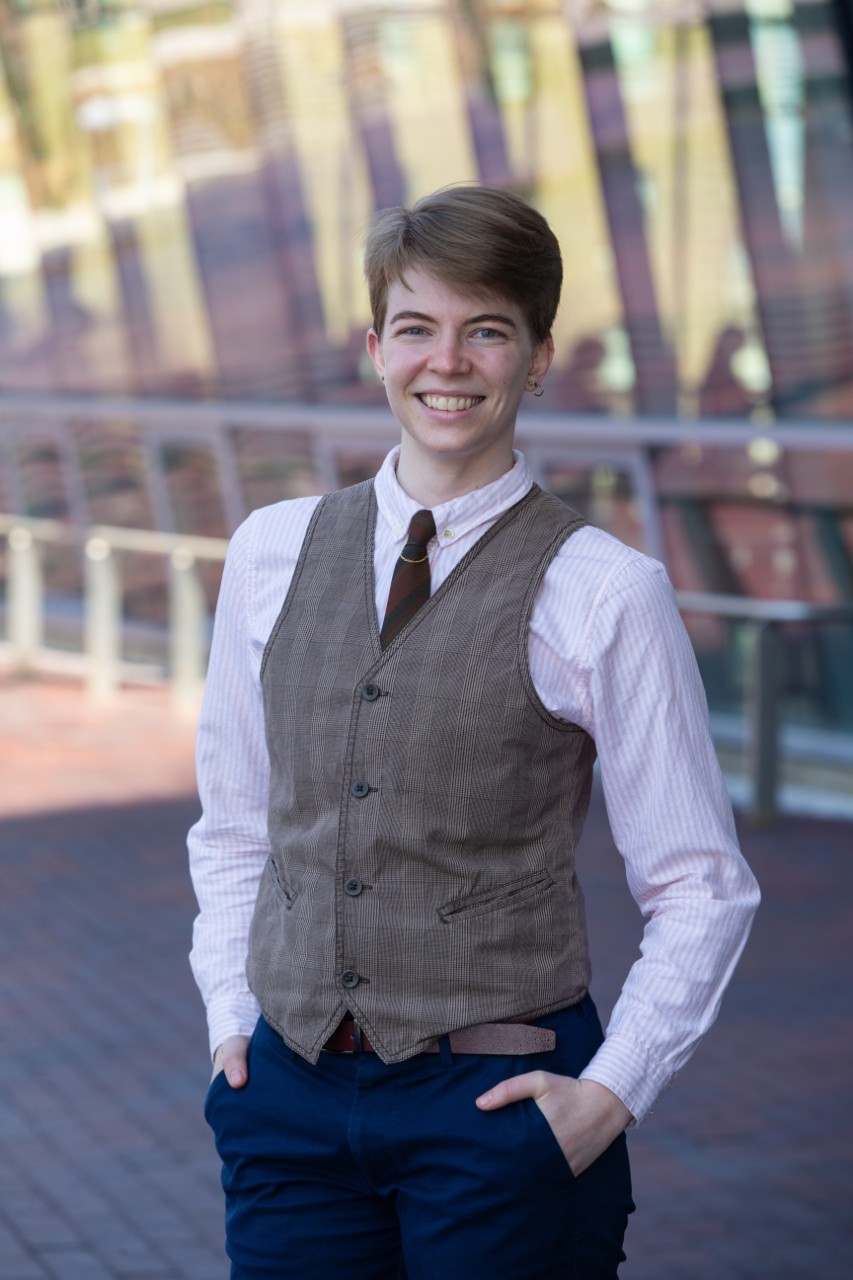
Malia Schram, fourth-year student at the UC College of Medicine/Photo/Andrew Higley/UC Creative + Brand
A feeling of support and security is one of the reasons third-year medical student Malia Schram chose the UC College of Medicine three years ago.
“I specifically came to UC because my other interviews did not show nearly the degree of interest in providing exceptional education to me as well as a community of support,” they said. “Now that I'm here, and I love it, and I’m so greatly supported in this environment, I want to continue that effort by pushing the school for greater change and inclusivity.”
Second-year student Al Lutwak says part of the reason he chose the College of Medicine was it was the only medical school he applied to that went out of its way to advertise its “trans-friendliness,” as he put it.
“It's one thing to have a slogan that's pro-diversity, but it’s quite another to actually practice it in all levels of education,” he says. “It's something where there's a lot still to be done and so I really want to push for that in our educational system.”
Pickle says the curriculum provided at the UC College of Medicine is for all students of all gender identities.
This is a community that is incredibly vulnerable, and luckily we’re finally having conversations about how marginalized people are treated in medicine.
Connie Chen
Getting the necessary training to care for a vulnerable population
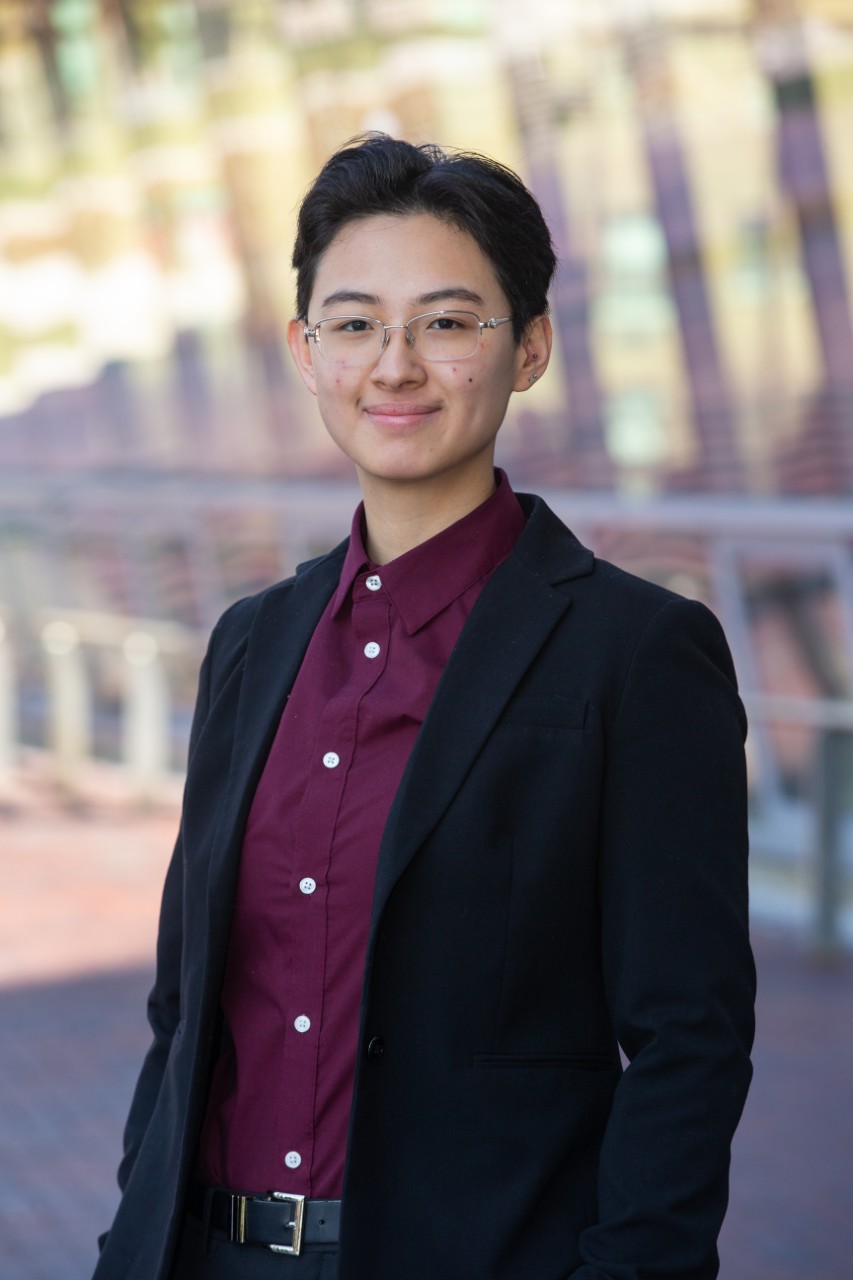
Connie Chen, second-year student at the UC College of Medicine/Photo/Andrew Higley/UC Creative + Brand
“Many of the skills we teach in the transgender medicine curricula are transferable to caring for minoritized or marginalized identities outside of gender identity,” Pickle says. “The concepts of inclusive history-taking, trauma-informed approaches to the physical exam and using inclusive language can be used to create an equitable and safe clinical environment for all patients, especially those who have been historically marginalized.”
Connie Chen is in their second year as a student at the UC College of Medicine. They say the training they are getting in the transgender medicine curriculum is crucial to be able to do what they want to do in their medical career.
“This is a community that is incredibly vulnerable, and luckily we’re finally having conversations about how marginalized people are treated in medicine,” Chen says. “Having adequate training to treat certain populations, even the ones that I’m not necessarily a part of, is important for me to provide the best care that I can.”
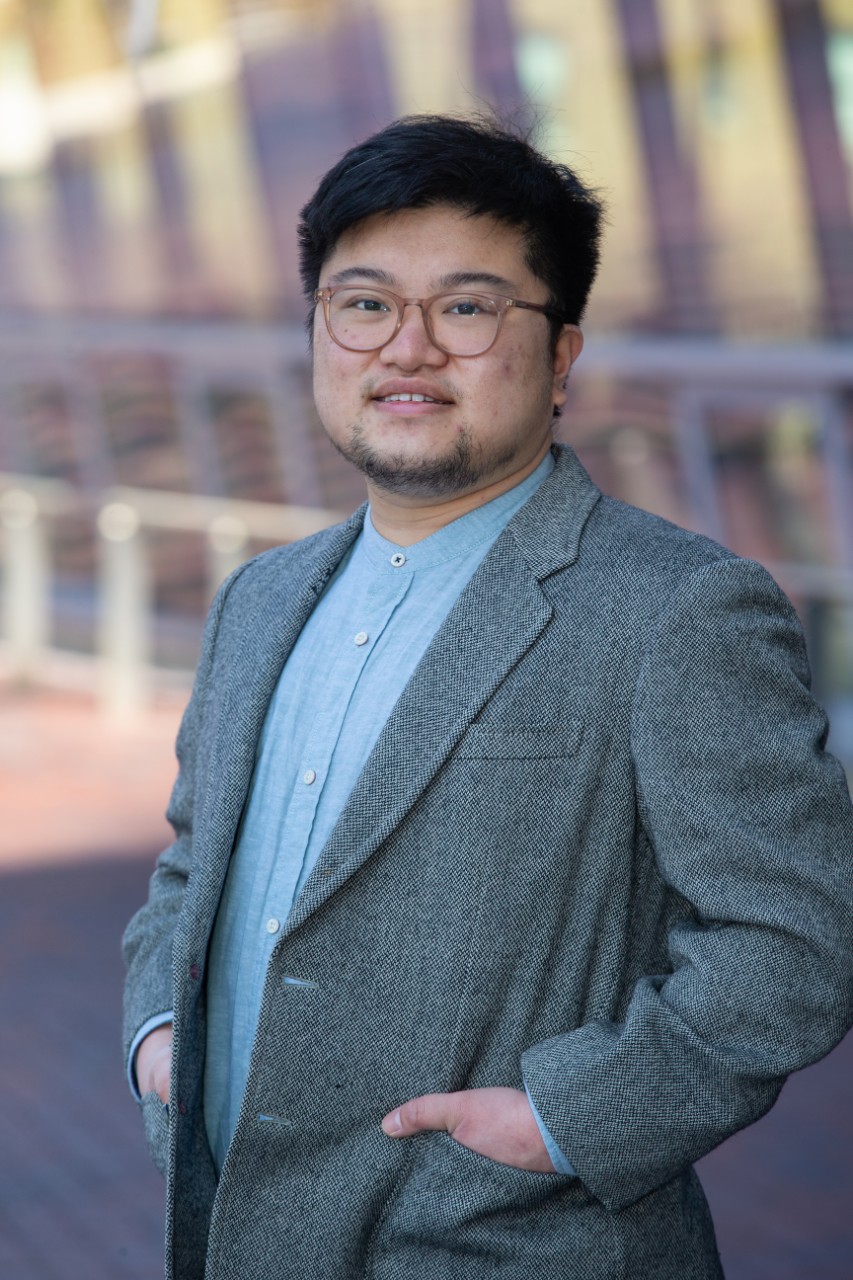
Emery Lu, first-year student in the UC College of Medicine/Photo/Andrew Higley/UC Creative + Brand
First-year student Emery Lu says training is the foundation of everything the College of Medicine does.
“There are physicians currently that don’t have a good understanding of trans health and that can make a lot of patients feel ostracized and hesitant to seek out health care,” they say. “I think it’s really crucial to have this training incorporated as early on as possible in med school and to continue that. With visibility increasing now, that’s paving the way for more change and a better curriculum.”
Pickle says over the past six years, the transgender curriculum has spread throughout the College of Medicine.
“We have clinicians in multiple departments and divisions including endocrinology, dermatology, gynecology, infectious disease, plastic surgery, otolaryngology, urology, psychiatry and behavioral health who have developed expertise in caring for transgender patients. These clinicians are teaching students, residents and fellows, which allows us to expand classroom curriculum into the clinical setting,” says Pickle. “It elevates the conversation when a department or a division is reviewing policies and procedures to ensure they are inclusive for transgender patients and discussing how they can develop more faculty champions in the area.”
Trailblazers or pioneers? They say no
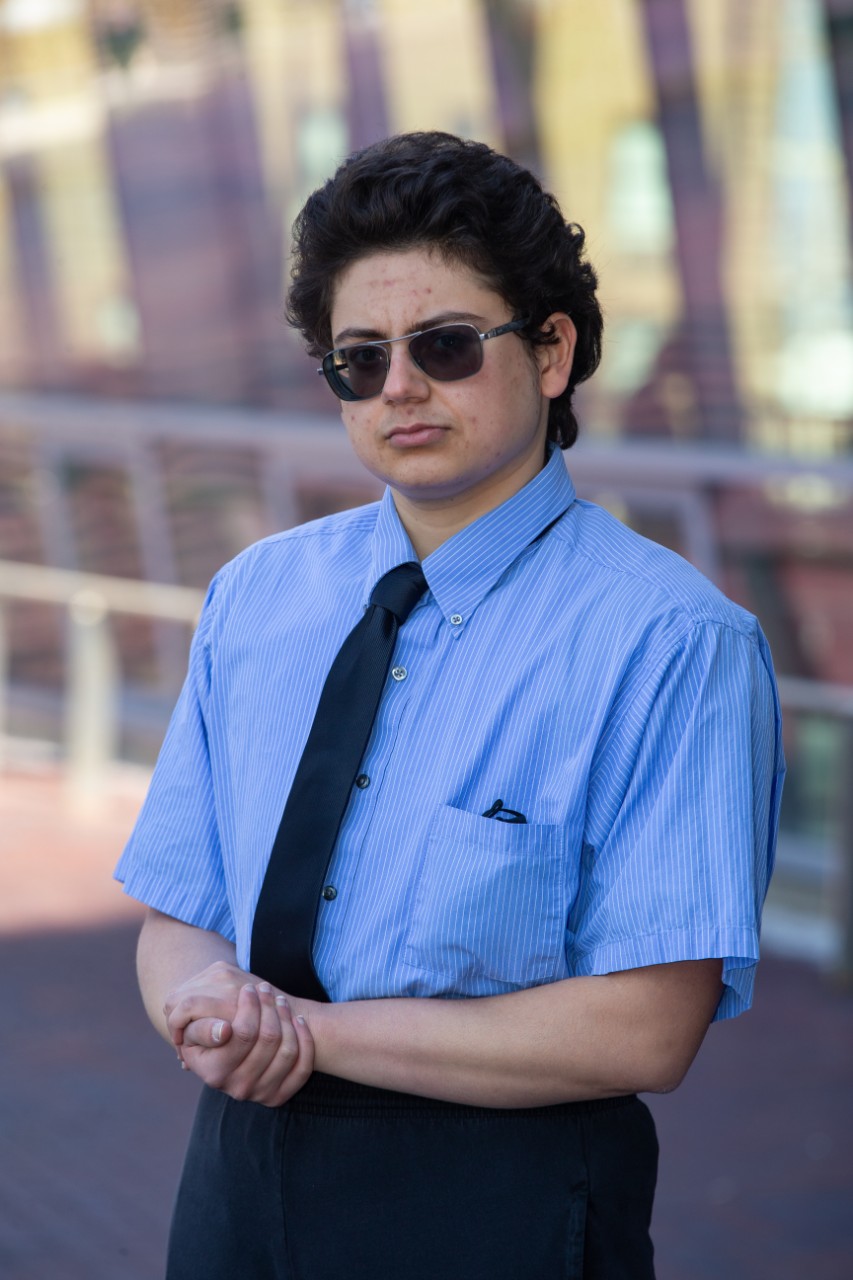
Al Lutwak, second-year student at the UC College of Medicine/Photo/Andrew Higley/UC Creative + Brand
All four of the students interviewed for this article shy away from the idea that they are pioneers or trailblazers in transgender medicine.
Schram says being part of a group that they identify with as a member means learning the history of that identity. They have studied the history of LGBTQ+ rights including those of trans people in the medical field, but they didn’t necessarily have visible mentors ahead of them, so as they came out more publicly and visibly, they had a class behind them that they knew were full of out and open people.
“But it does create this dynamic for me that when I go into the clinic and I'm like, ‘Oh if I don't do XYZ today, will that cause consequences a year from now?’” Schram says. “It can be really frustrating when it's as simple as, for example, in one of our surgical suites you have to go through a gender[-identified] changing room to get to the operating room. So you are required to choose a gender, and I panicked. I felt I knew what the correct answer was for that situation, but I panicked because I was with someone who was also very confused as to what to do.”
Student Lutwak says for him the situation is different because of his binary identity which makes invisibility an option for him currently and in the future.
There are definitely moments when you realize you are the only ‘someone’ in this room of people. Do you represent your community, or do you stay silent?
Emery Lu
“There’s a thing about passing privilege where if you’re on the right side of the conversation, and if the assumption is that you’re another impartial person who doesn’t care about the minority you’re talking about, then people will listen to you more,” he says. “It’s an unfortunate Catch-22 where the people who care the most about an issue are never listened to. I want to be the person where when someone makes a bigoted assumption, they assume they’re safe telling it to me, so I kind of want to be the trap.”
Lu admits to feeling some pressure to be an advocate for the community because of who they are, but adds they feel like they have to because if they don’t, others won’t do it for them.
“It feels like you have to stand up for yourself and those in your community in the medical space which is true for a lot of marginalized communities,” Lu says. “There are definitely moments when you realize you are the only ‘someone’ in this room of people. Do you represent your community, or do you stay silent? I think there are a lot of forces that you have to deal with to try to find both your spot in the world but also the people with you and coming after you as well.”
Chen says their ethnicity as a Chinese American adds another element to the identities that they represent.
“If you are part of a marginalized group, you are automatically seen as an advocate for it. Everything that you do is considered advocacy, meanwhile I’m just trying to do my job or study,” they said. “I’ve met plenty of people who have never met a trans person before, much less a Chinese American trans person. So, for them, I am the first person to introduce them to this identity and teach them about it. That has been a really interesting experience. It’s very rewarding, but it can also be very stressful. Because I’ve learned that the things I say or do don’t just reflect on myself, but also my community.”
Preparing the way for the ones who come after, Chen, Schram, Lu and Lutwak and others will take a continued commitment to growing the transgender medicine program at UC and acceptance and inclusion across the country, according to Pickle. She says as a medical system nationally, so many of the decisions being made are based on a binary construct of male and female.
“When we think about representation on committees and leadership, we’re not looking at men and women, we’re looking at a much more diverse spectrum of identities. I think those are areas that we need to be purposeful in our growth as a college of medicine,” Pickle says. “We have some great next steps to get there, including our advancing inclusion in the medical education task force and our gender equity task force which has a specific aim. Both myself and Malia are on that task force to do that background work of making sure policies and procedures have that sense of gender inclusivity. We still have a ways to go.”
Featured image at top (left to right): Al Lutwak, Connie Chen, Emery Lu and Malia Schram. Photo/Andrew Higley/UC Creative + Brand
Next Lives Here
The University of Cincinnati is classified as a Research 1 institution by the Carnegie Commission and is ranked in the National Science Foundation's Top-35 public research universities. UC's medical, graduate and undergraduate students and faculty investigate problems and innovate solutions with real-world impact. Next Lives Here.
Related Stories
Engineering doctoral student studying cyberattack prevention...
April 21, 2025
As a top graduating student in his undergraduate class, Logan Reichling came to the University of Cincinnati to further his education through the direct-PhD program in computer science. His initial connection to UC’s College of Engineering and Applied Science was through his current advisor, Boyang Wang, in an undergraduate research program. Since arriving at CEAS, Reichling has been honored with several awards, including being named Graduate Student Engineer of the Month.
'HAIR' '60s rock musical on stage at CCM April 24-27
Event: April 24, 2025 8:00 PM
The University of Cincinnati College-Conservatory of Music (CCM) invites audiences to experience a bold and joyful revival of "HAIR," the groundbreaking rock musical that defined a generation. Directed by Vincent DeGeorge with musical direction by Steve Goers, CCM's production of "HAIR" brings the revolutionary spirit of the 1960s to life for a new generation.
UC researcher develops at-home diagnostic test for endometriosis
April 21, 2025
Katherine Burns, a University of Cincinnati researcher who has endometriosis, speaks about her journey of developing a non-invasive diagnostic test for the condition.
